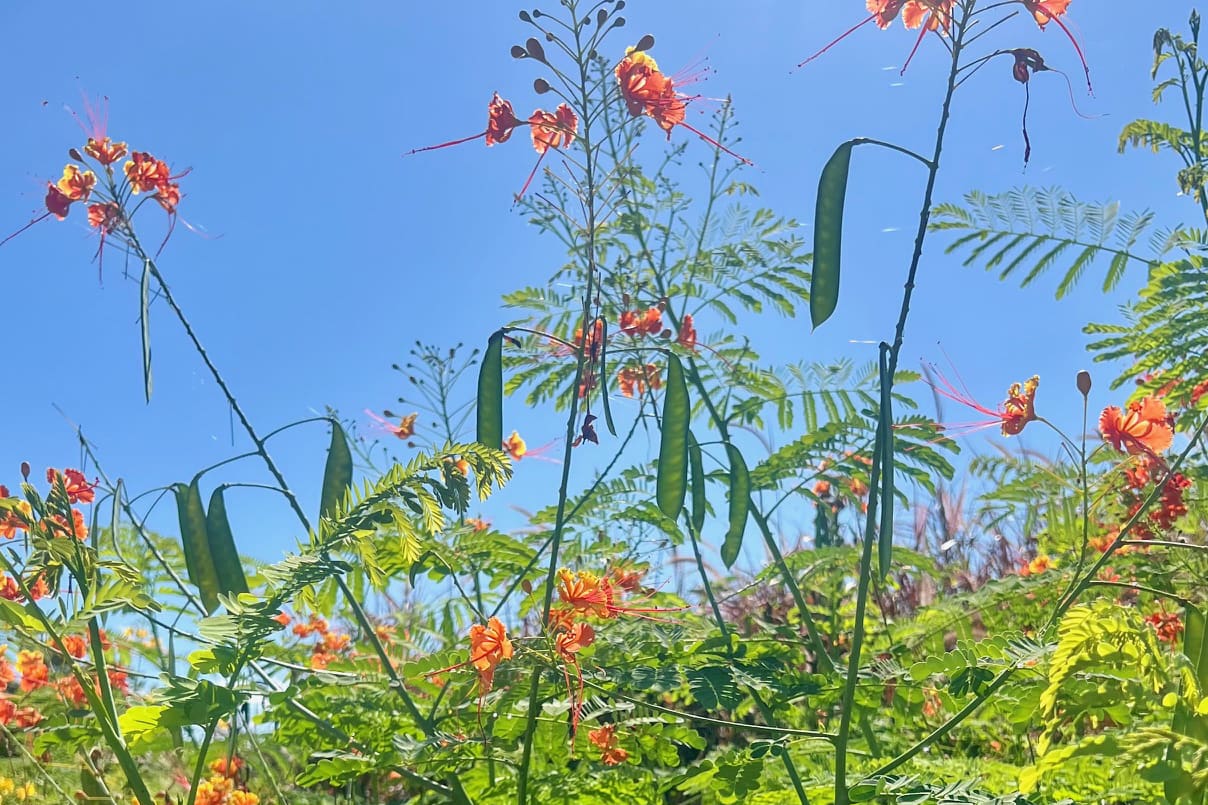In late June, we traveled to the Costa Rica landscape for an immersive experience in one of the most ecologically diverse regions on the planet. Surrounded by vibrant flora, butterflies, hummingbirds, and dense rainforest landscapes, the trip offered a fresh perspective on the intricate relationships between plants and the wildlife they support.
Now, back in the Mid-Atlantic, I’m inspired to reflect on what we observed and how the lessons from the Costa Rica landscape translate into meaningful insights and ideas we can apply to our gardens back home.
Immersed in Biodiversity
Costa Rica’s rich, layered forests are alive with movement and sound. Plants spilled from every direction, vines stretched upward, and thick canopies sheltered colorful bursts of foliage below. Each walk revealed an ecosystem of remarkable density and complexity, where no inch seemed untouched by growth.
What stood out most to me in the Costa Rica landscape were the natural patterns: plants using other plants as scaffolding, trees supporting bromeliads and mosses, and mutual relationships between birds, insects, and blossoms. One core theme that emerged again and again was the interconnectedness, how nothing thrives alone.
Heliconias, with their vibrant bracts and hidden nectar-rich flowers, are striking tropical plants that have evolved to attract hummingbirds, their prime pollinators. We saw two or three buzzing around this specimen.
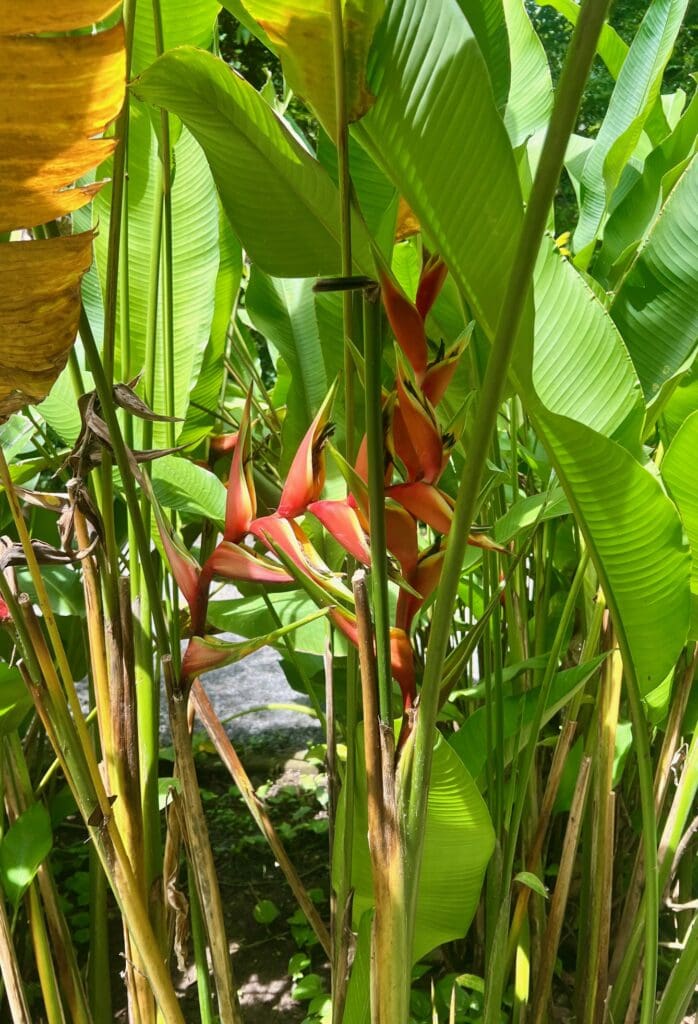
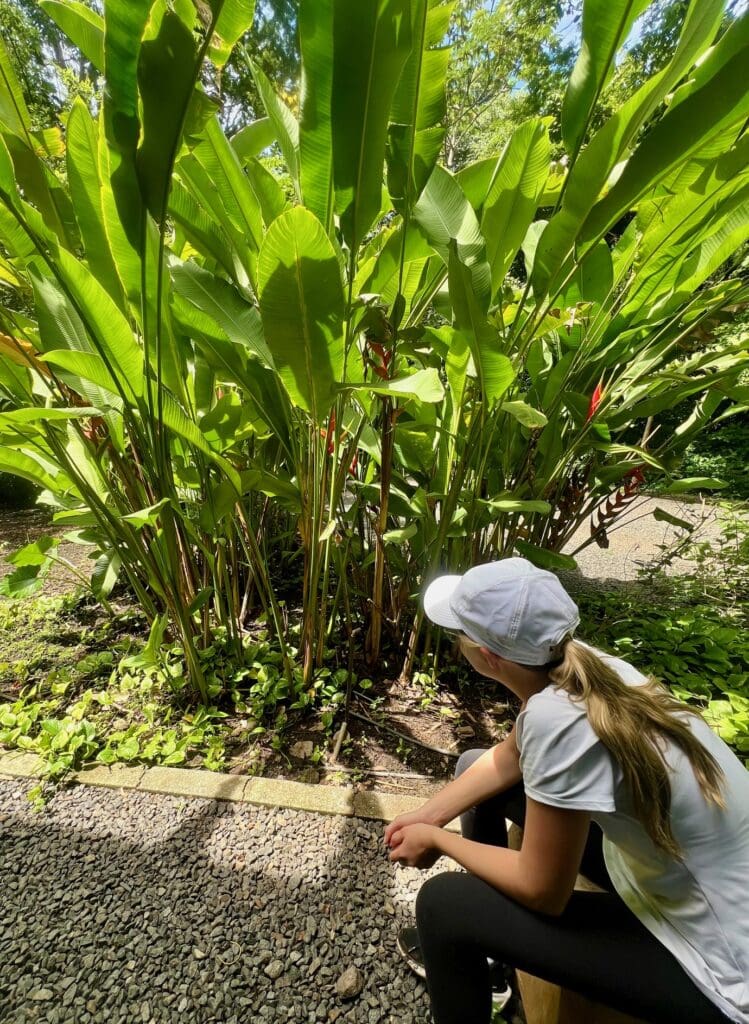
Heliconias are a stunning example of co-evolution in which hummingbirds gain the energy-rich nectar they need, while the plant itself benefits from cross-pollination facilitated when the hummingbirds feed from one plant to the next, transferring pollen.
The color, shape, and even orientation of the flowers are finely tuned to match the feeding style of particular hummingbird species.
Pollinator Magnet Moments in the Costa Rica Landscape and Inspiration for Back Home
One of my favorite parts of Costa Rica is the butterflies and hummingbirds at nearly every stop — floating over flowers, pausing to sip nectar, and darting quickly out of sight. Certain blooms seemed to be particularly magnetic, pulling dozens of butterflies at once. It was a reminder that pollinator attraction is often about offering the right resources in the right setting.
Malinche shrubs and trees burst into fiery blooms of red, orange, and scarlet during the dry season and early rainy season in Costa Rica. The large flowers, rich in nectar, are a vital source of energy for butterflies. Their open flat blossoms provide ideal easy access for butterflies to feed with minimal energy expenditure.
This same principle applies here in the Mid-Atlantic: intentional planting with bloom variety, seasonal availability, and habitat layering can create similar pollinator hubs.
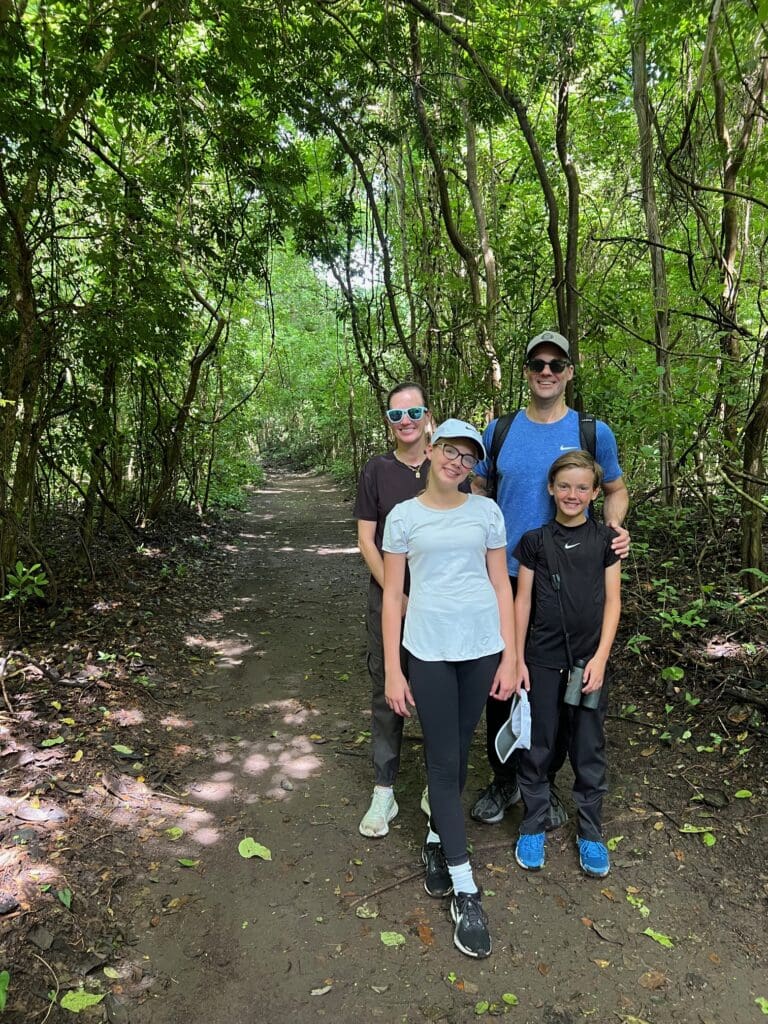
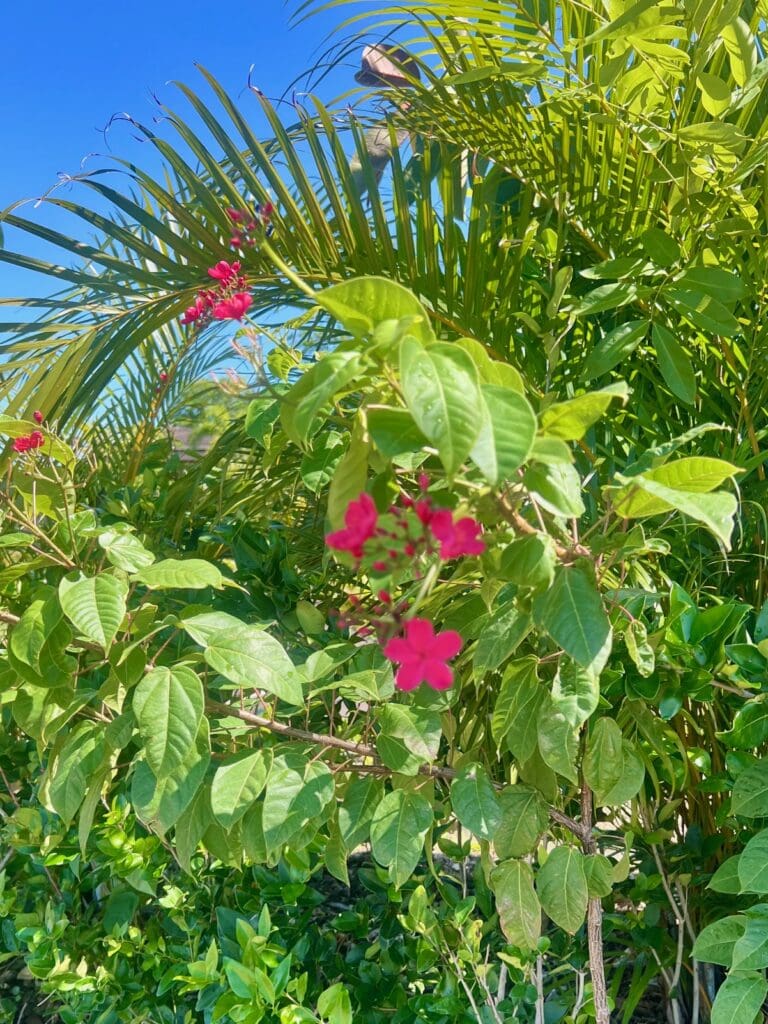
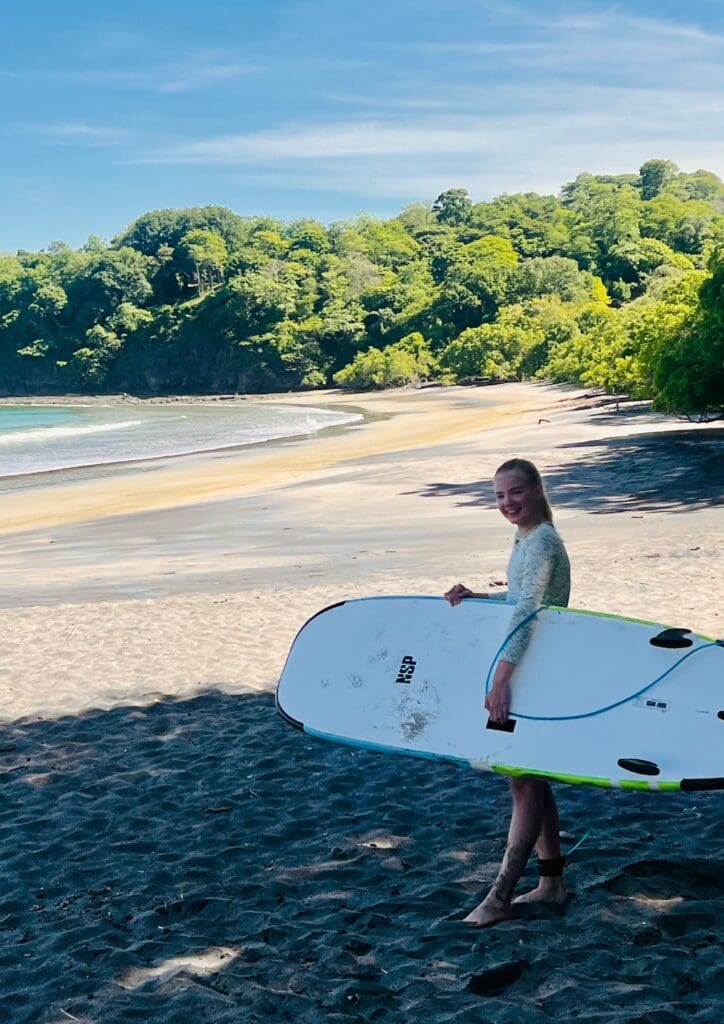
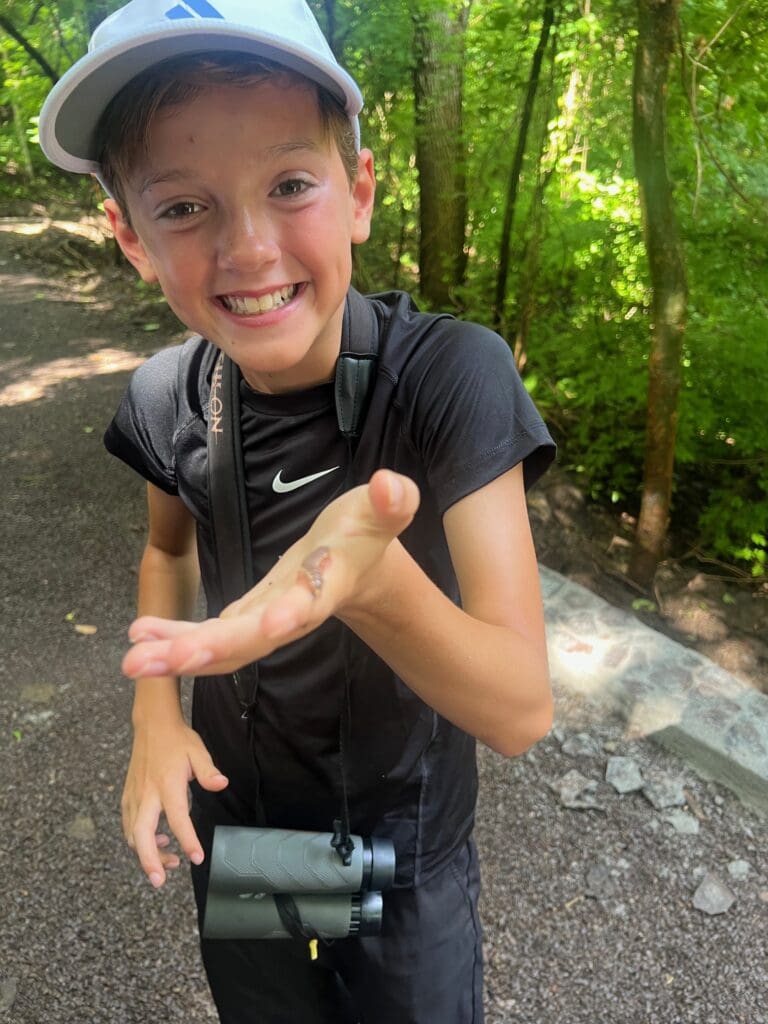
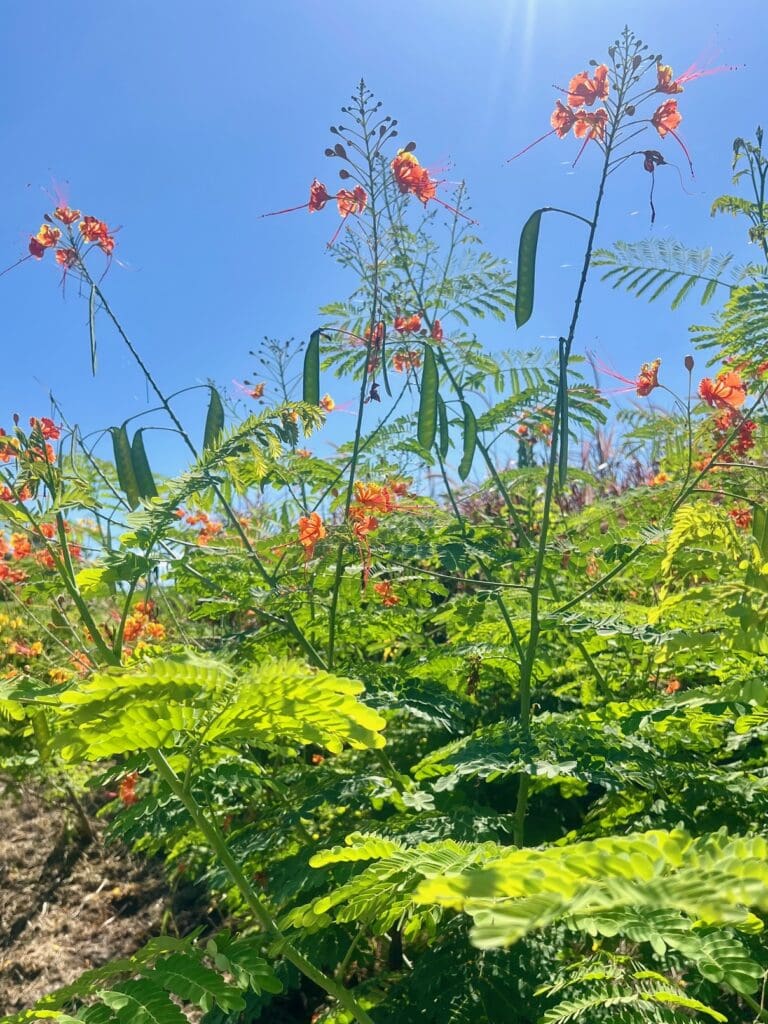
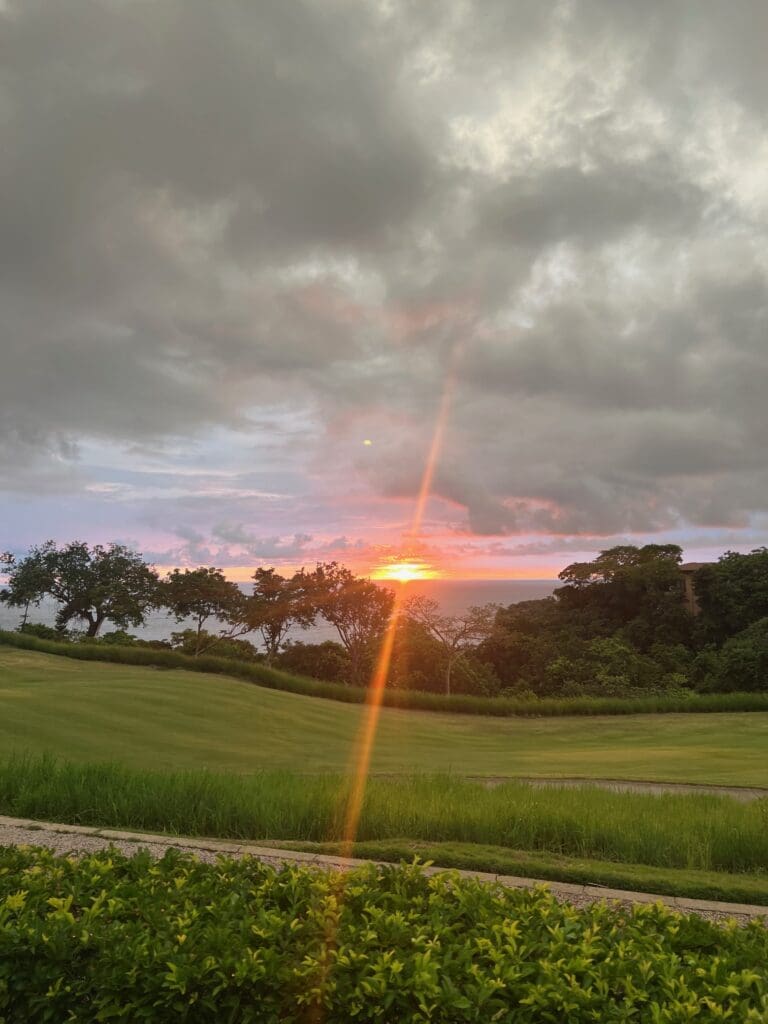
The Power of Movement and Color in the Costa Rica Landscape
Beyond their ecological function, pollinators bring a sense of motion and vibrancy to a landscape. In Costa Rica, bright reds, oranges, and yellows dominate the bloom palette, perfect for attracting butterflies and hummingbirds. Combined with the constant flutter and hum, these elements created a landscape that felt not just alive, but activated.
Bringing this energy into Mid-Atlantic spaces doesn’t mean imitiating the tropics, but it does mean embracing diversity. By layering bloom times, mixing colors, and allowing a bit of wildness, we can create rhythm, contrast, and ongoing visual interest.
Inspiration for Back Home
In Costa Rica’s year-round growing season, the abundance of butterflies and awe-inspiring plants is everywhere you look, but we can still create environments for these insects to thrive by planning for seasonal blooms here in Maryland and DC.
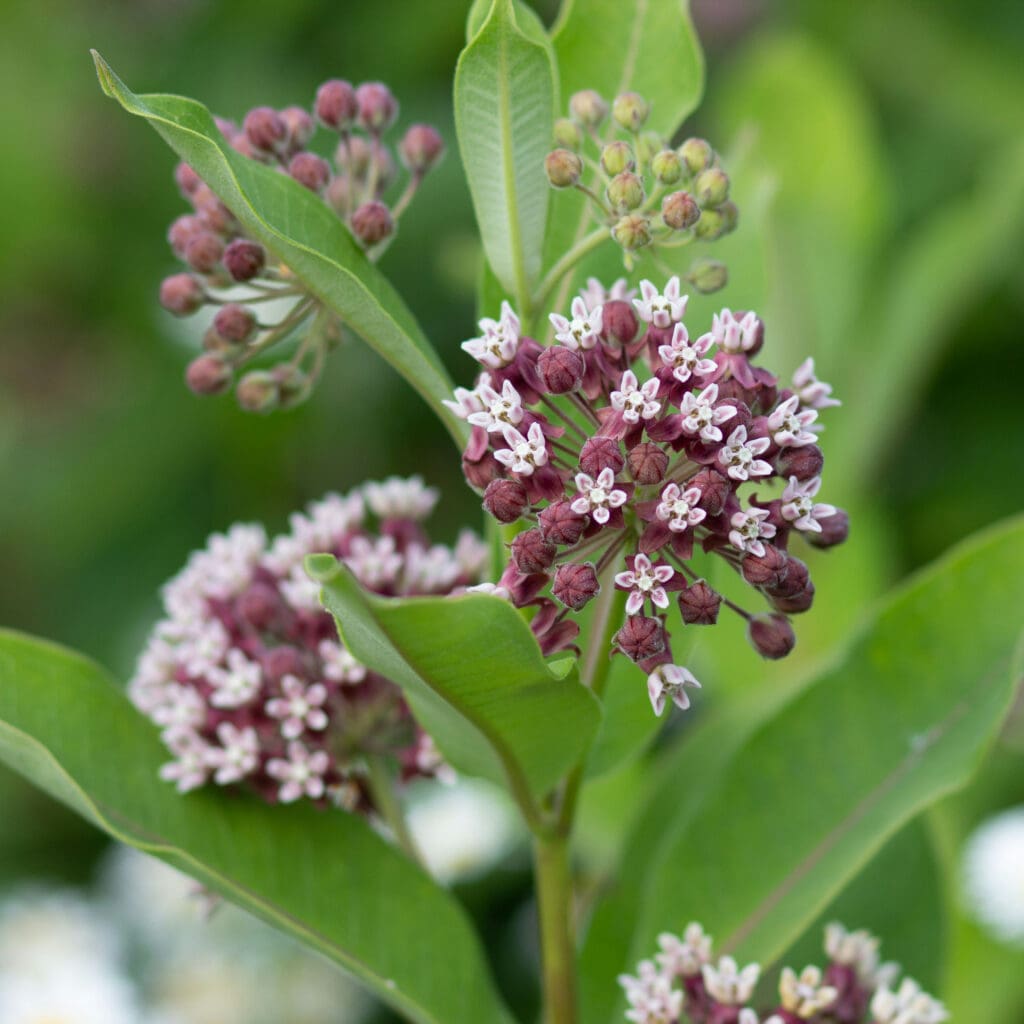
Milkweed in the Mid-Atlantic region plays an irreplaceable role for the Monarch butterfly. It’s the only host plant where the butterflies will lay their eggs and from which the adults feed from.
In addition to Monarchs, many other butterflies like Swallowtails and Skippers visit the milkweed for nectar. Not to mention Milkweed’s vibrant orange, pink and white flowers being a brilliant addition to any garden.
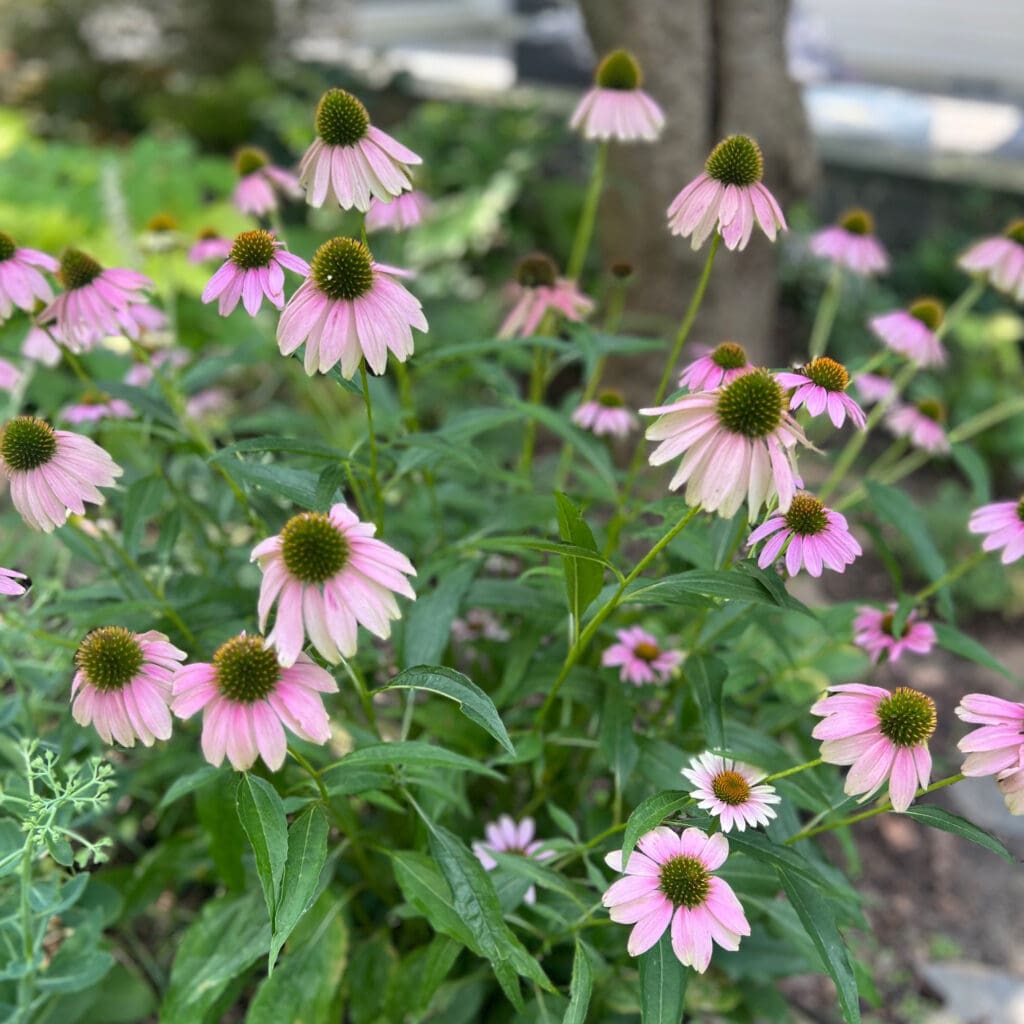
Echinacea (Cone flower) is a hardy, long-blooming native flower in the Mid-Atlantic region that plays a vital role in supporting local pollinators. Its bold purple, yellow, orange, and deep pink daisy-like flowers are magnets for a wide variety of pollinators, offering both nectar and pollen. Its late bloom is also a key resource during butterfly migration and breeding season.
After it flowers, the seed heads attract birds like goldfinches, which feed on their seeds in late fall and winter.
Bringing the Wonder Home
Stepping back into familiar terrain after a week in Costa Rica came with a renewed sense of appreciation for even the smallest signs of life. Tiny garden visitors now feel a bit more extraordinary. Whether it’s planting more intentionally, leaving a patch of wild growth, or simply noticing who shows up each day, the ripple effect is real.
There’s something grounding about witnessing nature so fully that you return with a drive to protect and nurture it, even in your own backyard.
Lately, I’ve been leaning into that feeling by paying closer attention to what I plant and how it supports local pollinators. A few standouts in my own garden: the butterfly bush and Vitex (also known as the chaste tree), both buzzing with life and color this time of year. Mallow has also made itself right at home, adding softness and a welcome landing spot for bees.
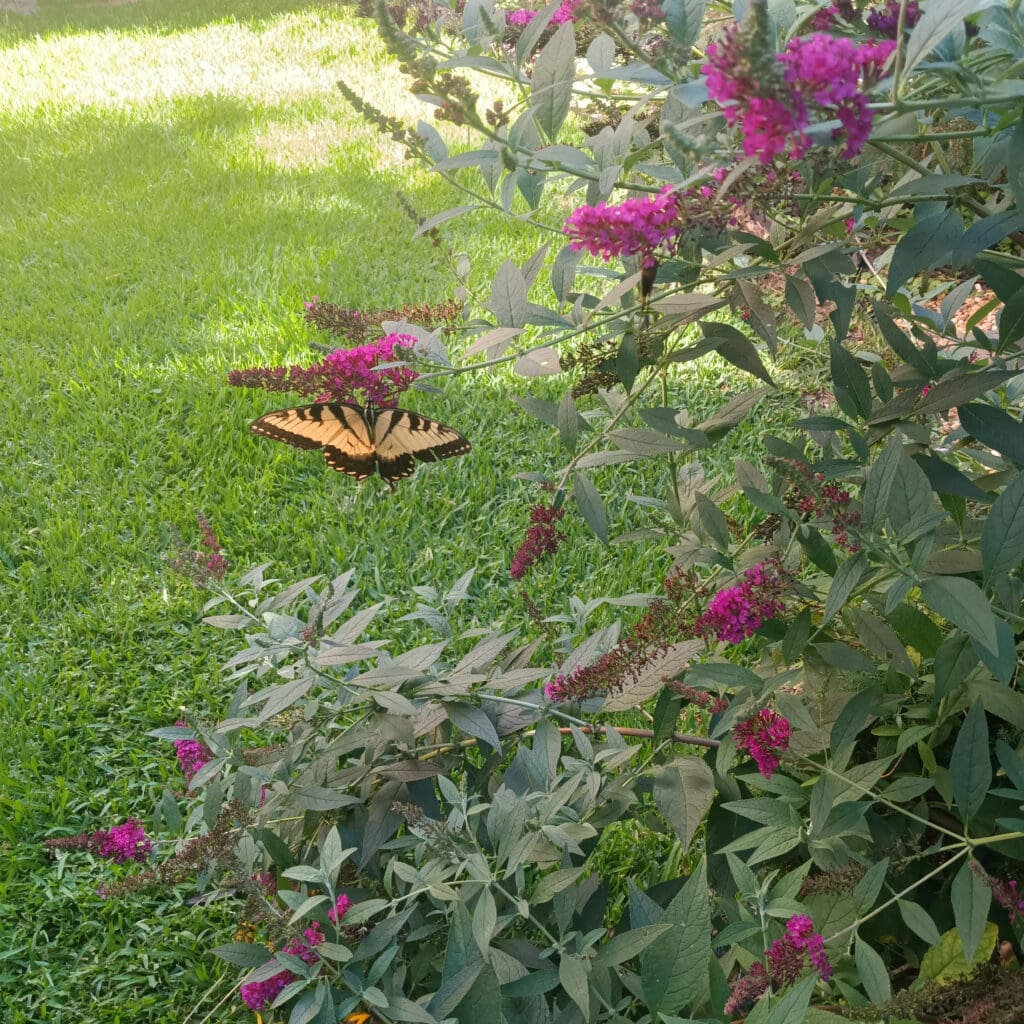

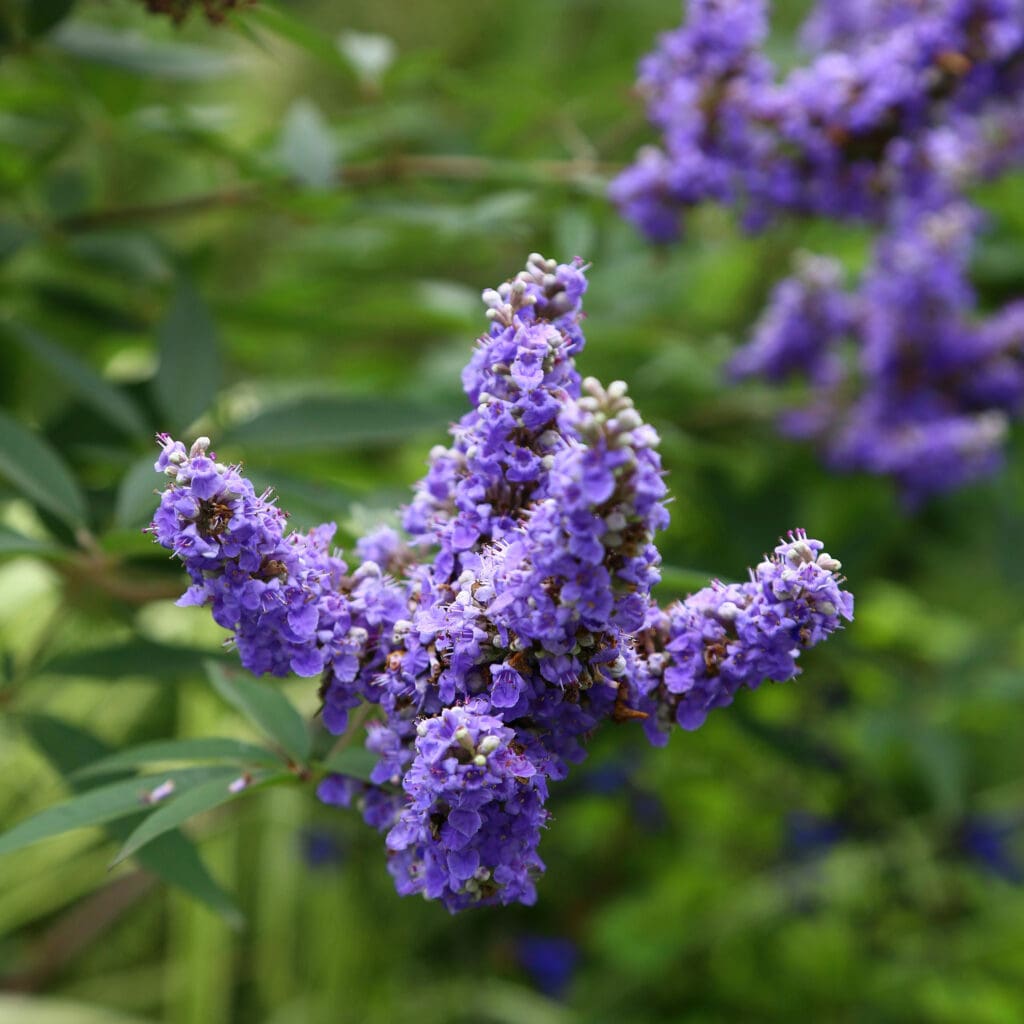
And then there’s Jeana phlox. One of my favorite native perennials. Its upright clusters of lavender-pink flowers are more than just beautiful. They’re a magnet for butterflies, skippers, hummingbird moths, and even the Eastern swallowtail. It’s the kind of plant that makes you pause, watch, and remember why it matters to create space for all of this life to thrive.
Providing Water Thoughtfully
In the rainforest, moisture is everywhere, mist hangs in the air, leaves drip steadily, and small streams snake through the undergrowth. We observed butterflies landing on moss-covered rocks and sipping from puddles, delicate moments that revealed how important hydration is to even the smallest animals.
Creating Your Water Station At Home
Creating a water station for bees, butterflies, and birds is a simple yet impactful way to support local wildlife during the hot days of summer. To create a well-designed station for wildlife:
- Choose a shallow basin. A clay saucer, shallow birdbath, or even a pie plate will do
- Add a landing zone. Bees and butterflies can’t land on open water and will need something to perch on. I’ve found that filling the basin with pebbles or marbles works. Leave the tops exposed so insects can land safely.
- Place in a sunny, safe spot ideally near pollinator-friendly plants and be sure to change the water daily to avoid mosquito larvae and algae buildup. Then watch as nature dances in your garden!
Bringing Your Backyard to Life
Curious how to bring more color, movement, and life into your outdoor space? Book a design consult to chat about how we can create a landscape of wonder, steps away from your back door.
